Trona's Boom, Bust and Uncertain Future
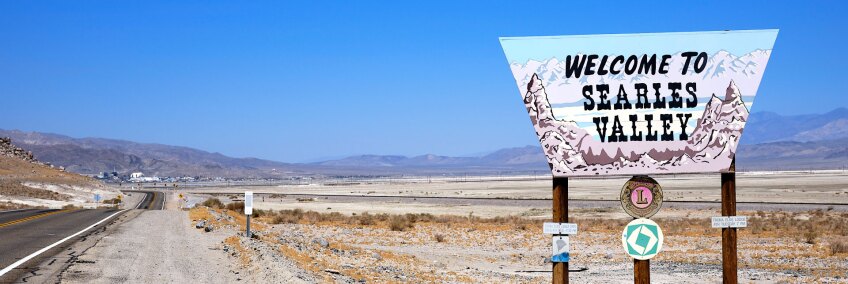
Created in partnership with Elemental: Covering Sustainability, a multimedia collaboration between Cronkite News, Arizona PBS, KJZZ, KPCC, Rocky Mountain PBS and PBS SoCal.
Homewood Canyon is tucked just high enough above the desert floor to offer a little bit of perspective — down to the flat, sandy Searles Valley and across to the craggy, pastel-hued Slate Range.
It’s also just far enough away from Trona, a 100-year-old mining community located 10 miles south, to allow Dave Garrison a little bit of breathing room. He moved here with his wife Deana nine years ago after retiring from two decades of round-the-clock duties dealing mostly with “the same 10 monkeys up the same 10 trees” as a deputy sheriff for San Bernardino County.
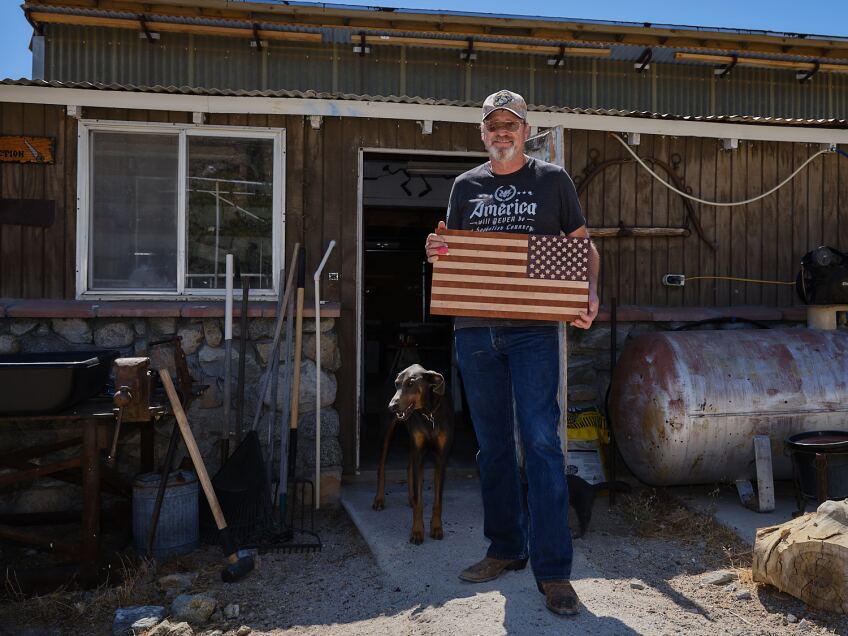
Here on a 20-acre spread, Deana has a horse and Dave has the space to indulge in a longtime woodworking hobby. Their home is filled with tables, desks, and cupboards built with a heavy nod to the Greene and Greene style of craftsmanship, although firearm-concealing shelves and cutting boards designed with an American flag motif are Garrison’s most popular pieces, sold locally through word-of-mouth.
When the mercury skyrockets, as it often does, Dave relaxes indoors with the couple’s dogs, maybe cooks a little something for Deana to eat when she returns home from her job at Searles Valley Minerals, Trona’s chief employer. “Out here, it’s peaceful,” says Garrison. “I’ve got it made.”

About 3 miles up the road sit the remnants of the Ruth Mine, which produced about a half million dollars’ worth of gold ore before the federal government ordered all non-essential mining operations to cease production during WWII. The once-bustling encampment, which included residential housing, a general store, and a small schoolhouse, quickly drained as miners and their families scattered toward other opportunities.
The Bureau of Land Management (BLM) eventually assumed responsibility for the abandoned property, inviting the public to explore signed hiking trails and well-preserved historic structures. In 2009, however, it was discovered that leftover tailings contained significant levels of arsenic that had leached into the soil, posing an environmental and human health risk, so the BLM began mitigation. Ten years later, all that remains is a handful of ransacked buildings, mostly boarded, with their interpretive signs long faded by the elements.
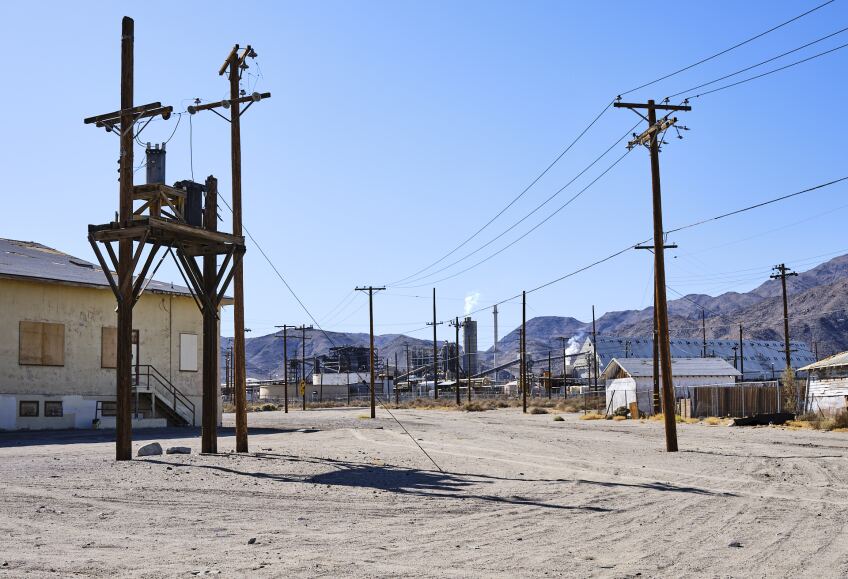
Ruth Mine’s boom-bust story — and its trilogy of economic, social, and environmental woes — is common to communities built around extractive industries. This includes Trona, a company town erected in 1914 to serve what was then American Trona Company and now Searles Valley Minerals (SVM), which utilizes solutions mining techniques to extract and process materials like borax and soda ash from the dry bed of Searles Lake.
Gail Austin, whose uncle was an assayer at the Ruth Mine, moved to Trona in 1949. He arrived just in time to witness its midcentury boom, when the community swelled to around 6,000 people who could spend their downtime at a movie theatre, swimming pool, bowling alley, and even a golf course. Necessities like groceries and medical services were readily accessible, and nearby Ridgecrest, now home to the Naval Air Weapons Station China Lake, was little more than a quiet crossroads.

After stints with the Navy and local mines, Austin took a position at the plant, thinking it a well-paying temp gig that would allow him to save enough money to move on. “After four or five years, I was a lot smarter and realized that the grass isn't greener,” he says. Now retired, Austin spends most days happily polishing stones, roasting coffee beans, and tidying his collection at the “Dog House,” which draws curious visitors, museum curators, and rock hounds who marvel at his impressive array of earth materials and historic artifacts.
Austin can pinpoint exactly when Trona’s most significant downturn began: in 1982, when the Kerr-McGee Corporation, which had taken control of local mining operations about 15 years prior, laid off around one-third of its employees, sparking a population drain. “Nobody else is here to hire them, there's nobody left to sell their house to,” says Austin. “The only thing they could do is pack up and leave.”
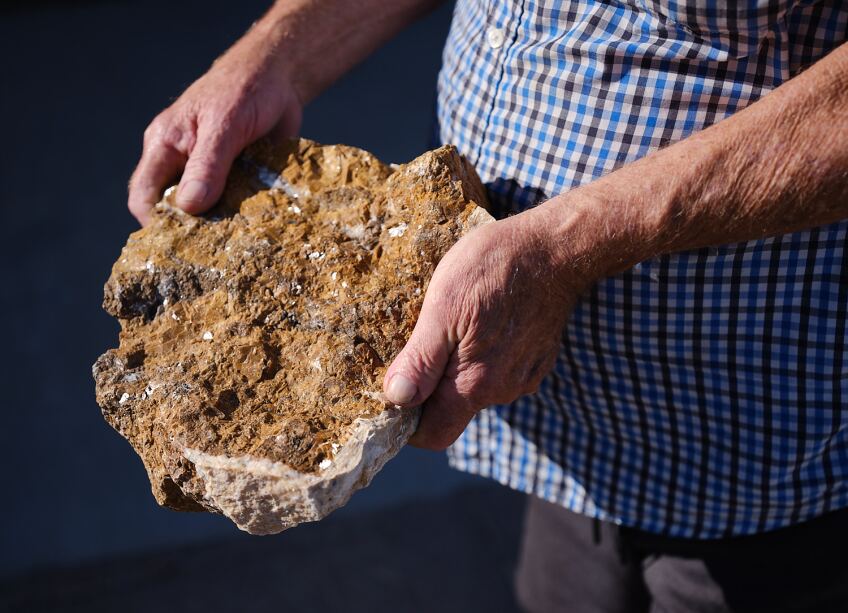
Housing prices sank, businesses shuttered, and the community began to unravel. Some who stayed on at the plants moved to Ridgecrest, which was experiencing its own boom thanks to expansion of Naval operations. Ownership of the Trona plants shuffled over the next few decades (SVM is now owned by Nirma Limited, an Indian company that primarily manufactures detergent-based consumer goods); with each transaction, the people who’d built their life around the company town felt increasingly abandoned.
Then came the 2019 earthquakes, a magnitude 6.4 on Independence Day, then an even stronger temblor the day after. Austin was able to save most of his collection at the "Dog House," but Trona itself didn’t fare quite as well. Electricity was temporarily disrupted and the water supply, funneled from Ridgecrest via a series of above-ground pipes, was inaccessible for nearly a week as crews worked to repair the cracked lines. Homes and businesses, both those previously abandoned and currently occupied, were heavily damaged; some, like Esparza Family Restaurant, one of only two eateries in town, and Family Dollar, the sole option for local groceries, were beyond repair.

The high school was also impacted; the teens now begrudgingly make do in a section of the intact elementary school. Damage to the SVM plants halted operations for the better part of two months; even now, they’re still not at full speed. And the Gem-O-Rama, a popular annual event and tourist draw hosted every October by the Searles Lake Gem and Mineral Society, has been cancelled for the first time in its 78 years. The aftershocks, literal and metaphoric, continue.
Dave estimates the current population of Trona is somewhere near 1,500 — at least several hundred residents lighter than it was on July 3, 2019.
Linda Funke, a retired Trona Elementary School teacher who now volunteers at a thrift shop that benefits the Trona Senior Center, says her neighbor moved to Montana to live with her daughter. “She couldn’t stand the shakes,” she explains. “I think they said we’ve had 80,000 shakes since the big one.”

Jolynn “JoJo” Tomkins rattles off the places others have gone: Michigan, Oklahoma, Texas. She moved here from New Mexico in 1988 after her father took a job with Kerr-McGee; her husband now works for SVM. “You got hurricanes on the east, tornadoes in the middle, and earthquakes on the west. Where are you going to run to? What are you running from?” she asks. “I'll stay right here in the desert.”
For those like Tomkins and Funke who have chosen to stay, rebuilding, much less reviving the community, is a daunting task. Damaged and abandoned homes require deep pockets to repair; on top of that, many contain asbestos, which makes for hazardous and complicated clean-up. Low water pressure prevents new construction, and water scarcity itself is a hurdle to luring new businesses.
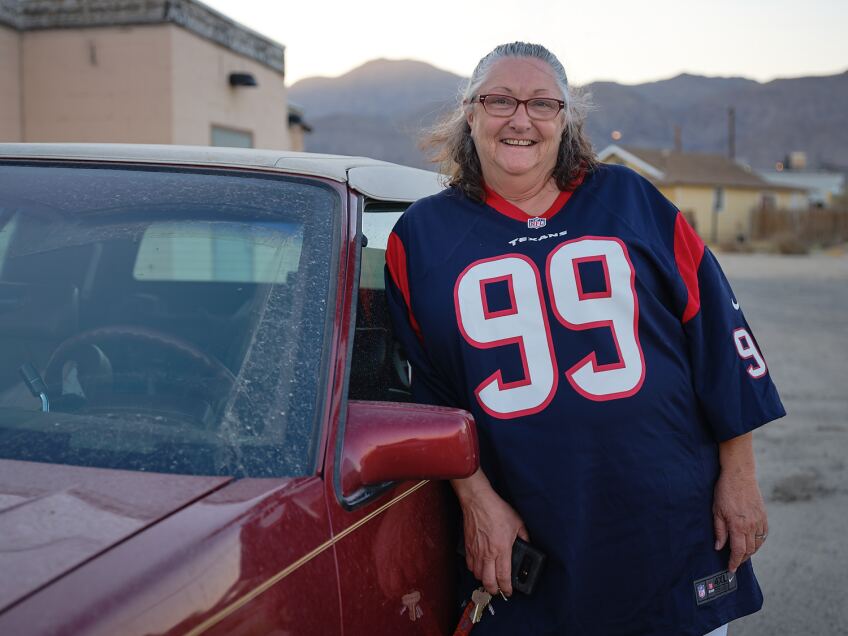
In fact, access to water is critical to Trona’s future. The community’s supply comes from an aquifer co-managed by an entity called the Indian Wells Valley Groundwater Authority (IWVGA) that includes three counties, the BLM, and the Navy. As a result of the state’s 2014 Sustainable Groundwater Management Act, the group has been tasked with creating a plan that will ensure sustainable use of the aquifer, which has been designated by the California Department of Water Resources as “critically” overdrawn. The IWVGA has drafted several potential plans that include drastically reducing access for agricultural and non-governmental industry, including SVM’s water-intensive solution mining operations, or possibly halting it altogether in adherence to state law that requires more sustainable usage. In Trona, where the local water utility is operated by SVM and the community’s stability depends on the company’s continued existence, either scenario is catastrophic.

As Austin tells it, Trona used to boast over a dozen bars; now the Elks Lodge is the sole social hub for those who want to talk about the future, reminisce about the past, or release a little tension in the present. Here, over Monday night football and a potluck dinner of pizza, wings, and assorted casseroles, another view of Trona emerges — one of a community doggedly determined to take care of its own.
Jeanne Michel, the organization’s Exalted Ruler and a cook for the Trona Unified School District, has been working nonstop since the quakes. After checking on her own home, she summoned inspectors to the Lodge, knowing it would become a critical hub for the community. She helped organize grants, host dinners, and collect donations of food, water, and supplies, including back-to-school kits for local children. Michel is humble when others heap praise on her efforts. “It’s not me doing it,” she says. “It’s all of us doing it.”
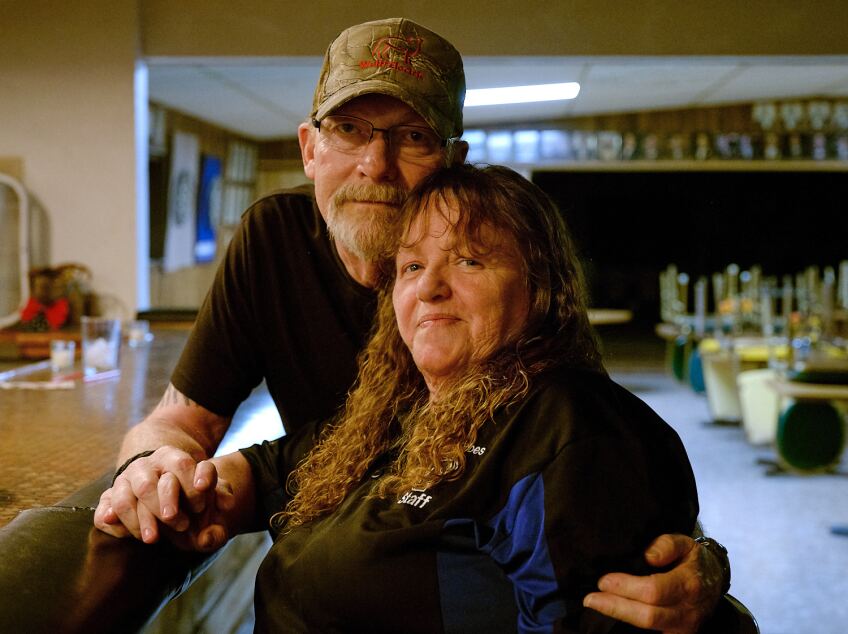
That collective effort includes not only locals, like longstanding nonprofit organization Trona Care, but also those arriving from afar: A mobile vet offering a spay and neuter clinic; volunteers from the United Methodist Committee on Relief, who are repairing the decommissioned Trona Community Church so it can be used as a community center; and even the marching band from Ridgecrest’s Burroughs High, who brandished their instruments to support the Trona Tornadoes during their first post-quake match on their sandy home field.
If not a full revival, the people of Trona are at least poised for some semblance of a return to normalcy. Esparza Family Restaurant will relocate to an abandoned salon. The SVM plant chugs away, and according to the company website, the fertile bed of Searles Lake contains “a supply of minerals so vast that it would take centuries to extract.” And plenty of families remain, too connected to their home to give up quite yet, if ever.
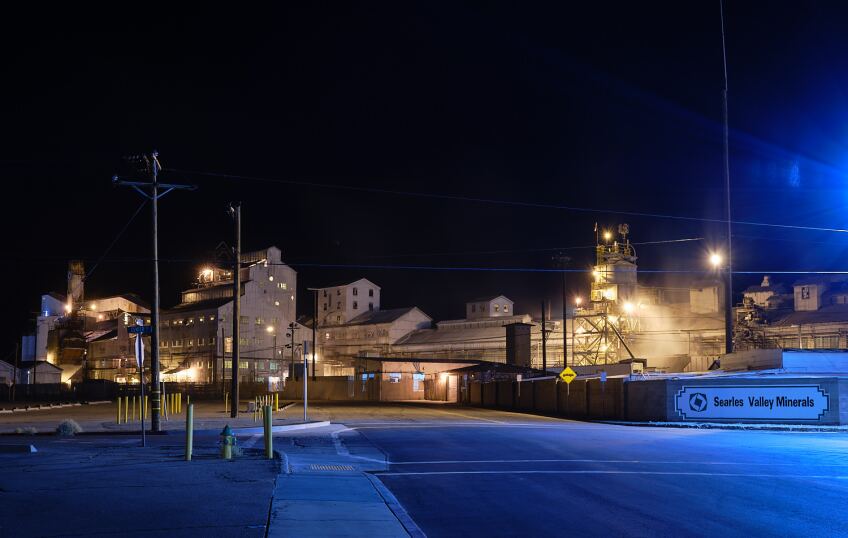
There’s even a bit of new construction around town, including some inside the old Veterans of Foreign Wars (VFW) building, which JoJo Tomkins and her husband bought five years back. The couple sunk their retirement into what they hope will launch next year as the Sidewinder Bar & Grill. It’s a gamble in troubled Trona, but Tompkins casts a hopeful eye on the road outside, which curves north to Panamint Springs, a gateway to Death Valley National Park. “The locals will keep the utilities on,” she says. “The tourists will keep us in business.”
Beyond that, there’s hushed talk of new developments, possibly a lime processing plant and a solar farm, operated by two homegrown Trona brothers, Shawn and Robbie Barker, who’ve consistently poured their resources straight back into the community. While they’re tight-lipped about the projects, locals, including Austin, are optimistic. “Anything that will help the valley or part of the area is good,” he says. “If there's more jobs, there will be people coming sooner or later. There's no doubt about it.”
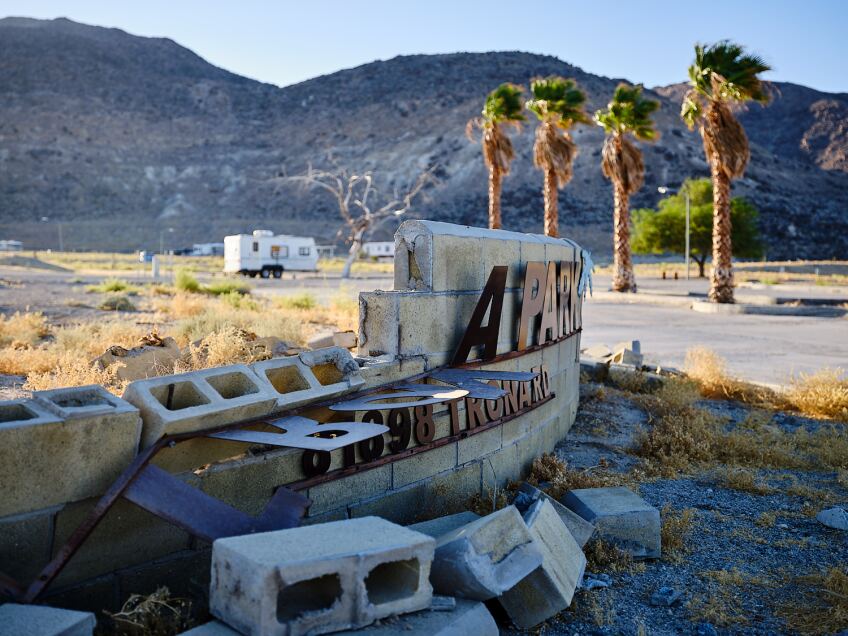
If one thing is clear upon talking with the residents of Trona, it’s that their future is anything but. Though he’s supportive of new industry in town, Dave isn’t sure about Austin’s prediction. “Have you ever driven around Trona? It looks like a third world nation,” he says. “If people have a job, they're going to prefer to live in Ridgecrest where they can go grocery shopping and do things like that.”
It’s not that he doesn’t want Trona to thrive; after all, it’s where his wife was born, and where her mother still lives. He’s invested plenty into the community beyond his work as a deputy, teaching woodshop classes and spending years volunteering with Trona Care to circumvent bureaucratic red tape and secure funding to safely raze asbestos-filled derelict homes. A few years back, Garrison even consulted with a Los Angeles-based preservationist to investigate options for designating historic landmarks and in turn, revitalizing these structures around town. Alas, it was difficult to secure funding for such an expensive undertaking, and the project fizzled.
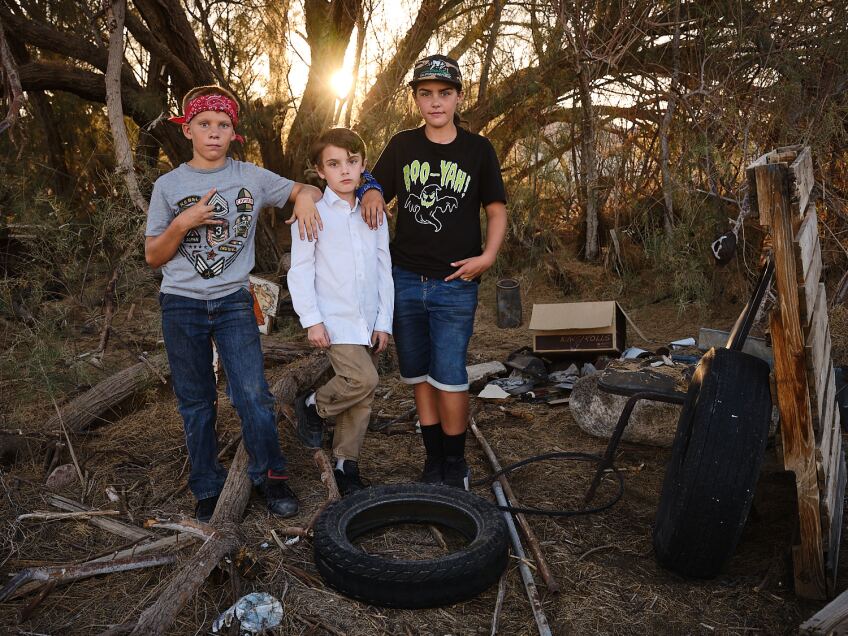
Garrison and his wife have talked about moving one day, perhaps to St. Mary’s, Idaho. “I don’t expect this town will be much more than a living ghost town in another 10 or 15 years,” he says. “I think that’s already written. I don’t know that it’s going to survive.”
But Linda Funke believes otherwise. “Perhaps the earthquake was a blessing because we had a lot of young people helping,” she says. “We’re still ‘Trona Strong’; we’re going to come back.” Funke pauses for a moment, glancing at a tapestry dangling from the thrift shop ceiling. It reads “Trona Tornadoes” — an homage to the high school football team. “Yeah, I think we will.”






